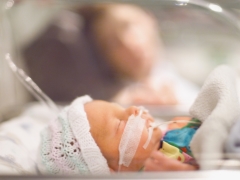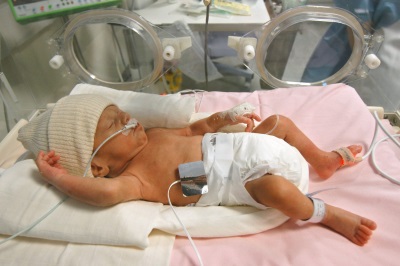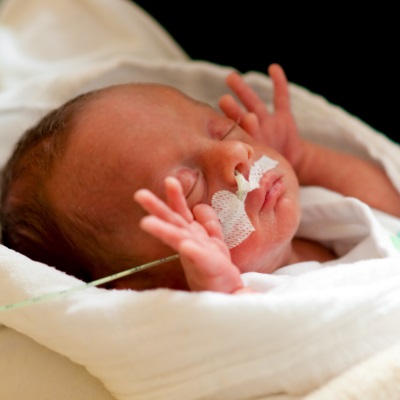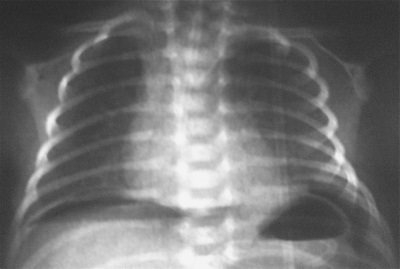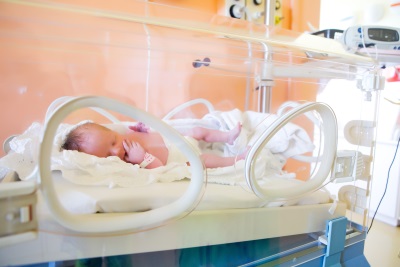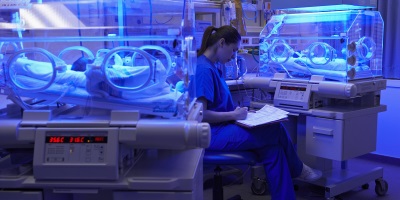Bronchopulmonary dysplasia in premature babies
Among all the pathologies in children who were born before the appointed time, especially with breathing problems. They are diagnosed in 30-80% of prematurely born babies. When they are treated, they use oxygen, which provokes the appearance of another pathology - bronchopulmonary dysplasia (BPD).
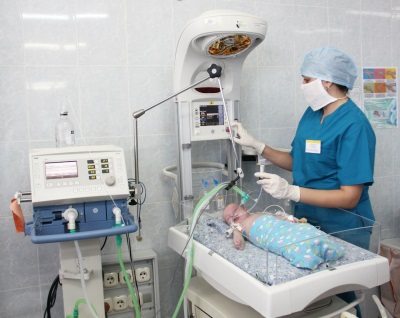
The reasons
The high frequency of problems with the respiratory system in premature babies is due to the fact that these babies do not have time to mature the surfactant system. TWhat are the substances that cover the alveoli of the lungs from the inside and prevent them from sticking together during expiration? They begin to form in the lungs of the fetus from 20–24 weeks of gestation, but completely cover the alveoli only at 35–36 weeks. During childbirth, surfactant is synthesized especially actively, so that the lungs of the newborn are immediately straightened out and the baby begins to breathe.
In premature babies, such surfactant is not enough, and many pathologies (asphyxia during labor, diabetes in a pregnant woman, chronic hypoxia of the fetus during gestation, and others) inhibit its formation. If a baby develops a respiratory infection, the surfactant is destroyed and inactivated.
As a result, the alveoli are not cracked and collapsed enough, causing lung damage and deterioration of gas exchange. To prevent such problems immediately after birth, the infant is given artificial respiration (ALV). A complication of this procedure, in which oxygen is used in high concentration, is bronchopulmonary dysplasia.
In addition to the insufficient maturity of the lungs in premature babies and the toxic effects of oxygen, the factors provoking BPD are:
- Barotrauma of the lung tissue during mechanical ventilation.
- Improper administration of surfactant.
- Hereditary predisposition
- Ingestion of infectious agents into the lungs, among which the main ones are called chlamydia, ureaplasma, cytomegalovirus, mycoplasma and pneumocystis. The pathogen can enter the body of the baby in utero or as a result of tracheal intubation.
- Pulmonary edema, which can be caused by both problems with the removal of fluid from the body of the baby, and excessive volume of intravenous fluids.
- Pulmonary hypertension, which is often caused by heart defects.
- Aspiration of gastric contents due to gastroesophageal reflux during mechanical ventilation.
- Lack of vitamins E and A.
Symptoms
The disease manifests itself after disconnecting the baby from the ventilator. The child's breathing rate increases (up to 60-100 times per minute), the baby's face turns blue, a cough appears, during breathing the intervals between the ribs are drawn in, the exhalation becomes longer, whistling is heard during breathing.
If the disease is severe, the child cannot be removed from the device at all, as he immediately suffocates.
Diagnostics
In order to detect bronchopulmonary dysplasia in a premature infant, it is necessary to take into account:
- Anamnesis data - at what period of pregnancy the baby was born and with what weight, was the ventilation, what was its duration, was there oxygen dependency.
- Clinical manifestations.
- The results of X-ray examination and analysis of gases in the blood, as well as computed tomography of the chest.
BPD Forms
Depending on the severity and needs of the baby in oxygen, they release:
- Mild bronchopulmonary dysplasia - respiratory rate up to 60, breathing at rest is not rapid, mild dyspnea and symptoms of bronchospasm occur during a respiratory infection.
- Moderate BPD - respiratory rate 60-80, increases with crying and feeding, moderate shortness of breath, dry rales are determined on exhalation, if an infection is attached, the obstruction increases.
- Severe form - the respiratory rate is more than 80 even at rest, the symptoms of bronchial obstruction are pronounced, the child is lagging behind in physical development, there are many complications of the lungs and heart.
In the course of the disease there are periods of exacerbation, which are replaced by periods of remission.
Stages of BPD
- The first stage of the disease begins on the second or third day of the baby’s life. It is manifested by shortness of breath, tachycardia, blue skin, dry cough, rapid breathing.
- From the fourth to the tenth day of life, the second stage of the disease develops, during which the epithelium of the alveoli collapses, edema appears in the lung tissue.
- The third stage of the illness begins with 10 days of life and lasts on average up to 20 days. When it occurs, damage to the bronchioles
- From 21 days of life, the fourth stage develops, during which in the lungs there are areas of collapsed lung tissue, and emphysema develops. As a result, the child develops a chronic obstructive disease.
Treatment
In the treatment of BPD is used:
- Oxygen therapy. Although the disease is provoked by mechanical ventilation, but a child with dysplasia often needs long-term oxygen supply. With this treatment, the oxygen concentration and pressure in the apparatus as much as possible decrease. In addition, be sure to control the amount of oxygen in the baby’s blood.
- Diet therapy. The baby should receive food at the level of 120-140 kcal for each kilogram of its weight per day. If the condition of the baby is severe, nutrient solutions (fat emulsions and amino acids) are administered intravenously or through a probe. Liquid is given in moderation (up to 120 ml per kilogram of body weight per day) in order to eliminate the risk of pulmonary edema.
- Mode. The baby is provided with peace and optimum air temperature.
- Medications. Babies with BPD are given diuretics (they prevent pulmonary edema), antibiotics (prevent or eliminate infection), glucocorticoids (relieve inflammation), bronchodilators (improve the bronchial patency), heart remedies, vitamins E and A.
Possible consequences and complications
With moderate and mild illness, the condition of babies slowly (within 6-12 months) improves, although BPD occurs with fairly frequent episodes of exacerbations. Severe dysplasia in 20% of cases leads to the death of the baby. In surviving babies, the disease lasts for many months and may result in clinical improvement.
In a part of prematurely born children, the diagnosis remains for life and causes disability.
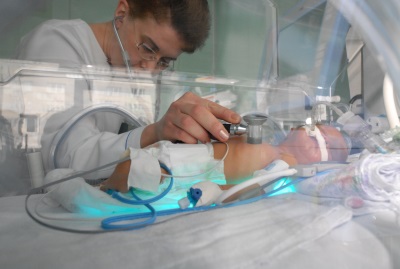
Frequent complications of BPD are:
- Formation of atelectasis, which are fallen sections of lung tissue.
- The appearance of the pulmonary heart. So called changes in the vessels of the lung caused by changes in the right ventricle.
- The development of heart failure associated with an enlarged heart.
- Formation of chronic respiratory failure, in which the child is required to additionally provide oxygen after discharge at home.
- The development of infections of the bronchi and pneumonia. They are especially dangerous for children younger than 5-6 years, as often lead to death.
- The appearance of bronchial asthma.
- Increased risk of sudden infant death syndrome due to frequent and prolonged apnea.
- Increased blood pressure.Usually diagnosed in a child of the first year of life and often successfully treated with antihypertensive drugs.
- Delayed development. In babies, a low rate of weight gain, growth retardation, and a lag in neuropsychic development caused by brain damage during periods of hypoxia are noted.
- The occurrence of anemia.
Prevention
The most important preventive measures for preventing BPD are preventing premature baby birth and proper nursing of the premature. A woman expecting a baby should:
- Timely treat chronic diseases.
- Eat well.
- To exclude smoking and alcohol.
- Avoid heavy physical exertion.
- Provide psycho-emotional peace.

If there is a threat of premature birth, the expectant mother is prescribed glucocorticoids to accelerate the synthesis of surfactant and more rapid maturation of the alveoli in the fetal lungs.
Babies who were born before the due time should:
- Competently conduct resuscitation.
- Introduce surfactant.
- Rationally conduct mechanical ventilation.
- Provide good nutrition.
- If an infection occurs, prescribe a rational antibiotic therapy.
- Limit the introduction of fluid through the vein.
